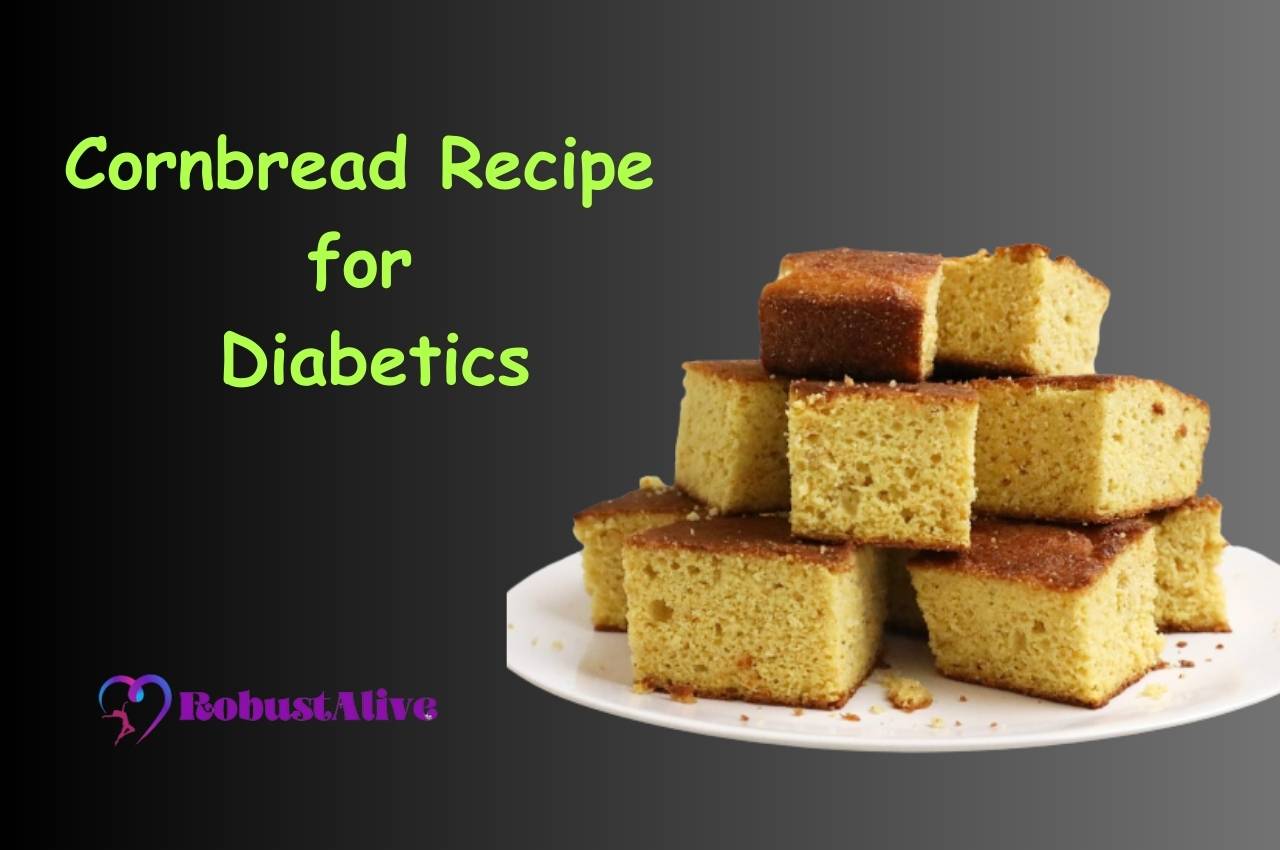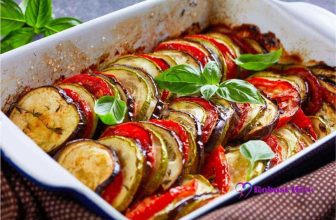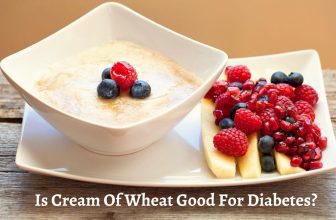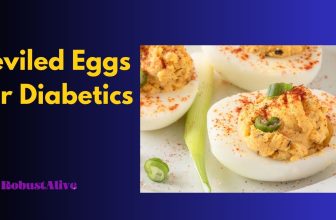Cornbread Recipe for Diabetics: A Comprehensive Guide

Cornbread is one of the healthiest food options for diabetic patients. The cornbread recipe for diabetics is easy and highly beneficial for health. This food originated in the Southern United States but is becoming trendy among health-conscious people because of its high nutrient value. Cornbread contains fibre which helps to have an excellent digestive system.
Whole Grains are known to control blood sugar. Cornbread recipe for diabetic patients’ main ingredient is whole grain cornmeal, which makes this food item an excellent choice for anyone wanting to stay fit by controlling their blood sugar level. It can be served as a delicious breakfast option instead of regular bread. Cornbread can be eaten as a snack in the evening with a cup of sugar-free tea or coffee.
Though it is a traditional food of the Southern United States, many variations are available now. People like to give their personal touch to this healthy conventional gem. Though Some people argue about the health benefits of cornbread, the majority of health-conscious people are in support of this Southern treasure.
Cornbread Recipe for Diabetics
Traditional cornbread recipe has become part of many family gatherings for generations. This indigenous food item won the hearts of many Americans and became a favorite comfort food for people across the border of the USA.
To prepare this cornbread, use all cornmeal or combine it with flour. If you only use cornmeal, then your cornbread can be crumbly. If you want to structure your cornbread correctly, choose the mixture option.
Southern Styled Sugar-Free Cornbread Recipe:
Firstly, you need some excellent quality cornmeal and a cast iron skillet.
List of Ingredients:
- Three cups of crushed cornmeal.
- Two tablespoons of kosher salt
- 2.5 tablespoon baking powder
- Three tablespoons of baking soda
- 3.5 ounces buttermilk
- 11/2 sticks of divided, melted, unsalted butter
As we avoid sugar entirely in this recipe, you can drizzle some honey on top of your cornbread to meet your sweet cravings.
Follow These Simple Steps to Get an Unsweetened Cornbread:
- Pre-heat the oven to 375°F (190°C) and set a 12-inch cast iron skillet on the center shelf.
- In the meantime, combine the cornmeal, baking soda, and baking powder in a bowl. Add salt too.
- Combine the buttermilk and eggs in another bowl and stir until combined. Incorporate all but one tablespoon of the melted butter while whisking continuously.
- After whisking the liquid into them, ensure the dry ingredients are correctly combined; overmixing ingredients can spoil the recipe.
- Then, carefully swirl the pan to coat the bottom and sides evenly with the remaining one tablespoon of melted butter. Pour batter into the skillet that has been prepped, smoothing the top with a rubber spatula as you go. Bake for about 45 minutes until the top of the cornbread is gently browned, and a spear inserted into the centre comes out clean.
- Serve warm after letting the skillet cool for about 15 minutes.
Another Variation of Cornbread:
The world of cornbread will welcome you with plenty of options to dig in. I’m adding a few delicious cornbread recipes to explore in your lovely kitchen.
Cornbread with Jalapeno and Cheddar:
Ingredients:
- Yellow cornmeal, 1 cup
- Flour, 3 cups
- Baking powder, two tablespoons
- Milk, 2 cups
- Kosher Salt, two tablespoons
- Unsalted and melted butter, two sticks
- Three giant, lightly beaten eggs
- 8 ounces of grated, split, extra-sharp aged cheddar
- Chopped Scallions, ⅓ cups
- Jellepino Pepper, three tablespoon
Follow these Steps:
- Mix the flour, cornmeal, baking soda, and salt in a bowl.
- Combine the milk, eggs, and butter in a different bowl. Stir the wet ingredients into the dry ones with a wooden spoon until most of the lumps are gone.
- Add 2 cups of the grated Cheddar, along with the onions and jalapenos, and let the mixture settle for 25 minutes at room temperature.
- Set the oven to 350 degrees Fahrenheit in the interim. Now grease a pan.
- Pour the batter into the pan, smooth out, and top with additional chopped scallions and the remaining grated Cheddar.
- Bake for approximately 35 minutes. Cut into large squares once cooled—warm or room temperature serving recommended.
7 Ways to Serve Cornbread for Diabetics:
Butter & Cornbread: Butter goes well with everything, but cornbread benefits the most from it. For traditional comfort food, spread some butter on top and microwave it for some time. It’s difficult to top this luscious and creamy combination.
Serve with Onion & Apple: Add apples and onions to the top of the cornbread and bake until golden. The apples will get softer, and the onions will caramelise, creating a delicious topping.
Cornbread & Veggies: Green vegetables, in particular, pair incredibly well with cornbread. Whether it’s spinach, kale, or collard greens, vegetables and cornmeal combine to make a tasty and filling supper. Your preferred greens should be sautéed and seasoned with salt, pepper, and garlic powder.
Meatloaf: Cornbread would go hand in hand with homemade meatloaf.
BBQ: Cornbreads are the ideal accompaniment to Barbecue meat. You can heap barbecue directly on the cornbread recipe, even without a bun. It makes a great main dish for every occasion, including special ones.
Soup: A hearty hot soup with cornbread and sour cream on top comforts the soul and is unquestionably remarkable.
Sausage & Beans: One of the quick dishes we all enjoy is sausage with black beans. All you need is Southern cornbread on the side for this traditional recipe.
Did You Know Cornbread is Older than America?
Before European explorers arrived on the continent, Native Americans had been consuming ground maise (corn) as a staple food for thousands of years. These settlers learnt cooking methods and recipes from various Native American tribes, started experimenting independently, and soon developed cornbread by replacing cornmeal with more conventional grains in European bread recipes. These pioneers did not use flour!
5 Health Benefits of Cornbread for People with Diabetes:
Excellent Source of Amino Acid: Human body can not produce amino acids. We have to eat food that contains amino acids. Cornbread is a good source of amino acids.
Supplies Selenium: Selenium is a nutrient required for the human body. According to NIH, selenium deficiency can affect the reproduction system. According to the USDA website, cornbread contains 10.0 µg selenium.
Provides Vitamins: The B vitamins thiamin and riboflavin are abundant in cornbread. Consuming cornbread is an excellent way to get these nutrients to supply much-needed energy to your body.
Regulates Cholesterol Level: Cornbread’s soluble fibre can help lower cholesterol levels. It binds with them and expels them from the body to prevent bile acids from being absorbed. It helps to maintain good heart health by lowering the bad cholesterol called LDL.
Prevents Inflammation: Magnesium, a mineral recognized for its anti-inflammatory qualities, is a cornbread ingredient. Cornbread also has Vitamin-C and beta Carotene along with magnesium. These nutrients can aid in lowering bodily inflammation. So, meals that reduce inflammation can help to fight inflammation.
Various recipes for cornbread use different ingredients. It contains a lot of unique ingredients and cooking techniques. Making a delicious cornbread loaf is difficult. Do you find the several types of cornbread to be so intriguing? You must be here for that reason, I bet! From one surprise to the next, I’ll take you! To choose your favorite sugar-free cornbread recipes for people with diabetes to offer at family breakfasts or dinners, follow my example and discover the fantastic world of cornbread!
How to Store Cornbread?
Just place the cornbread in an airtight container or food storage bag, covered in plastic wrap or aluminium foil, as you would for the pantry technique. Once it is done, put it in the fridge. Your storage time will increase by a few days as a result.
Frequently Asked Questions (FAQs)
-
Is Cornbread Ok for Diabetics?
Corn meal is a suitable substitute for white or wheat flour for persons with diabetes since it is vital in dietary fibre, which can lower blood sugar levels. For some people with diabetes, checking their blood sugar levels after consuming cornbread is crucial to ensure it doesn’t result in a surge.
-
Is Cornbread Healthier than Wheat Bread?
Wheat bread (100 grams) has 238 calories per 100 grams, but cornbread has 96 calories. White bread is high in calories; however, cornbread is 60% lower in calories. Cornbread is, therefore, more nutrient-dense than white bread. As a result, you can think of it as healthier.
-
What Does Cornbread Taste Like?
Although it can be a little crumbly, it must maintain its shape and balance sweet and salty flavours that play off the taste of the corn without overpowering it. It’s a very light, crumbly bread that can serve sweet or plain and has a unique, almost gritty flavour and texture that makes it the ideal side dish.
-
Which One is Sweeter, Northern or Southern Cornbread?
Northern cornbread is sweeter, lighter, and more cake-like than Southern cornbread. Contrary to traditional Southern cornbread, it naturally contains sugar (or molasses in prior eras).
-
Is Cornbread High in Carbohydrates?
The traditional cornbread is very carb-heavy. It’s made of cornmeal, grinding dried corn into a coarse flour. The 30 net carbohydrates in 1/4 cup of cornmeal are average.
Conclusion
Cornbread recipes for diabetics can be a delightful and fulfilling addition to your diet plan. Diabetes patients must be mindful of the cornmeal used and keep added sugars and fats to a minimum. People with Diabetes can also experiment with substitute sugars and wholesome fats to create palatable cornbread. For people with diabetes, working with a healthcare provider and a qualified dietitian is crucial to ensure that cornbread fits into their unique meal plan.





